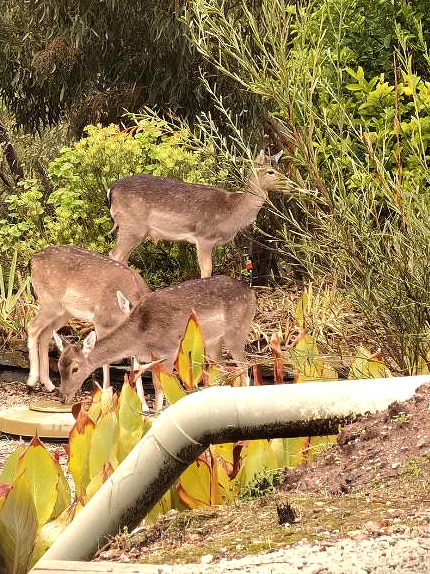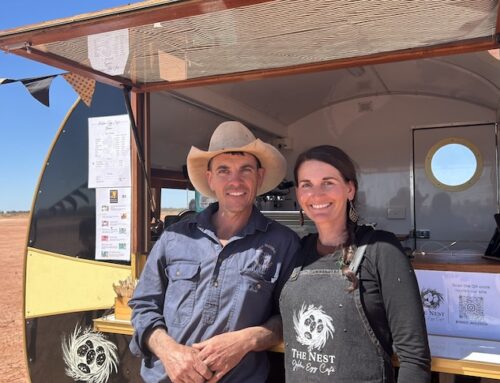In short:
It is estimated about 300 deer inhabit the Mitcham Hills.
About 2,000 exist in peri-urban areas around Adelaide.
What’s next?
An eradication program is underway to rid SA of an estimated 40,000 state-wide.
Hundreds of deer are gathering around the Mitcham Hills, just 10 minutes from Adelaide’s CBD, as contracted shooters work to try to eradicate the feral animals.
Using thermal imaging gear and hunting at night, the contractors have shot about 100 on private land in the Brown Hill Creek and Crafers West area over the past few months.
Deer are daily visitors to grounds of the historic Carrick Hill, where gardener Jon Dittmar had noticed “a bit of an uptick” in their numbers.
“I see them at least once a week at the back,” he said.
“Obviously they’re spooked by noise. It’s why probably a lot of the hikers through there wouldn’t see them, but early in the morning they’re always out.
“We see a lot more kids … there’s new deer every season.”
A University of Adelaide spokesperson said staff at the Waite Institute and Conservation Reserve had seen an increase in numbers over the past 12 months, although this had coincided with a more formal monitoring program.
“Deer eat newly planted seedlings, uprooting them in the process,” she said.
“They also damage trees by scraping their antlers against the trunks during the rut, and may also spread invasive species onto the conservation reserve.”
The animals have been spreading olive trees, which have grown out of control across the region, strangling the life from native flora in many areas.
Deer eat the olives and subsequently spread the seeds in their droppings.
Introduced by settlers
They were introduced to Australia by European settlers for game in the 19th century, and have also escaped into the wild from commercial farms.
The most common species include fallow, red, hog, chital, rusa and sambar deer, and the South Australian government estimates there are about 40,000 feral deer across the state, with the majority in the south-east.
Tom Kloeden from Landscapes Hills and Fleurieu said there was an estimated 2,000 in peri-urban areas around Adelaide, from the Onkaparinga Hills and across the Adelaide Hills face zone, and their numbers were “steadily increasing”.
He said there was potentially 8,000 in the greater Adelaide Hills and Fleurieu Peninsula region.
“Recently we had an aerial shooting operation in the Mount Bold Reservoir Reserve and took out over 240 deer in about five days,” Mr Kloeden told ABC Radio Adelaide.
“We’re also working with contract ground shooting operations in the peri-urban zone and the smaller land holding in the hills, and getting them into key areas to undertake some of this control in some of the more tricky areas where landowners will find it difficult to do themselves.”
As well as the damage they cause to flora, the deer compete with native wildlife and livestock for grass, contribute to erosion in waterways, and have become an increasing hazard on the roads, causing a number of vehicle collisions.
In particular, they have been spotted on the South-Eastern Freeway from Adelaide into the hills, where the speed limit heading north is 100 kilometres per hour.
“The real challenge is the peri-urban area, and it’s important we get onto it now, otherwise the numbers will continue to grow and just become more difficult,” Mr Kloeden said.
He said there was a state-wide strategy to eradicate deer from SA within 10 years and believed it was “still possible”.
“We’re still at that population growth stage,” Mr Kloeden said.
“That’s why we’re going quite hard now and trying to work across the landscape with as many land managers and private landholders as we can get.”




